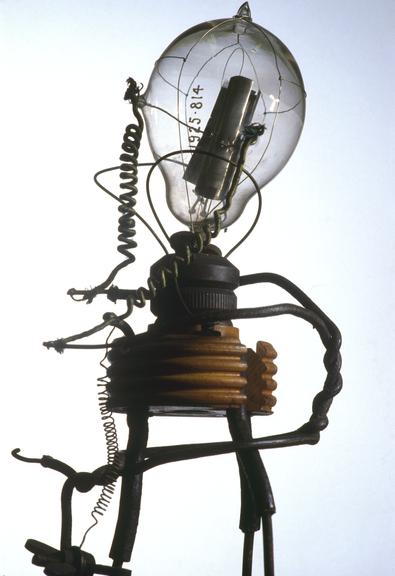
One of Fleming's first thermionic diode valves, 1889
1889


Three original thermionic valves devised by Sir John Ambrose Fleming in 1904, using filament lamps made by the Edison and Swan United Electric Light Company, London, in 1889
The invention of the thermionic valve in 1904 by John Fleming at the Marconi Company was a significant development for electronics and radio communication. The first transatlantic radio transmissions of 1901 threw up a significant problem: how to detect the incredibly weak radio signals at the receiving end. Fleming, inspired in 1904 by a 'sudden and very happy thought', turned to modified filament lamps which he had investigated earlier, and found that they detected the high-frequency signals. His invention was a diode, the first in a line of device which were to be a mainstay of electronics well into the solid-state era.

